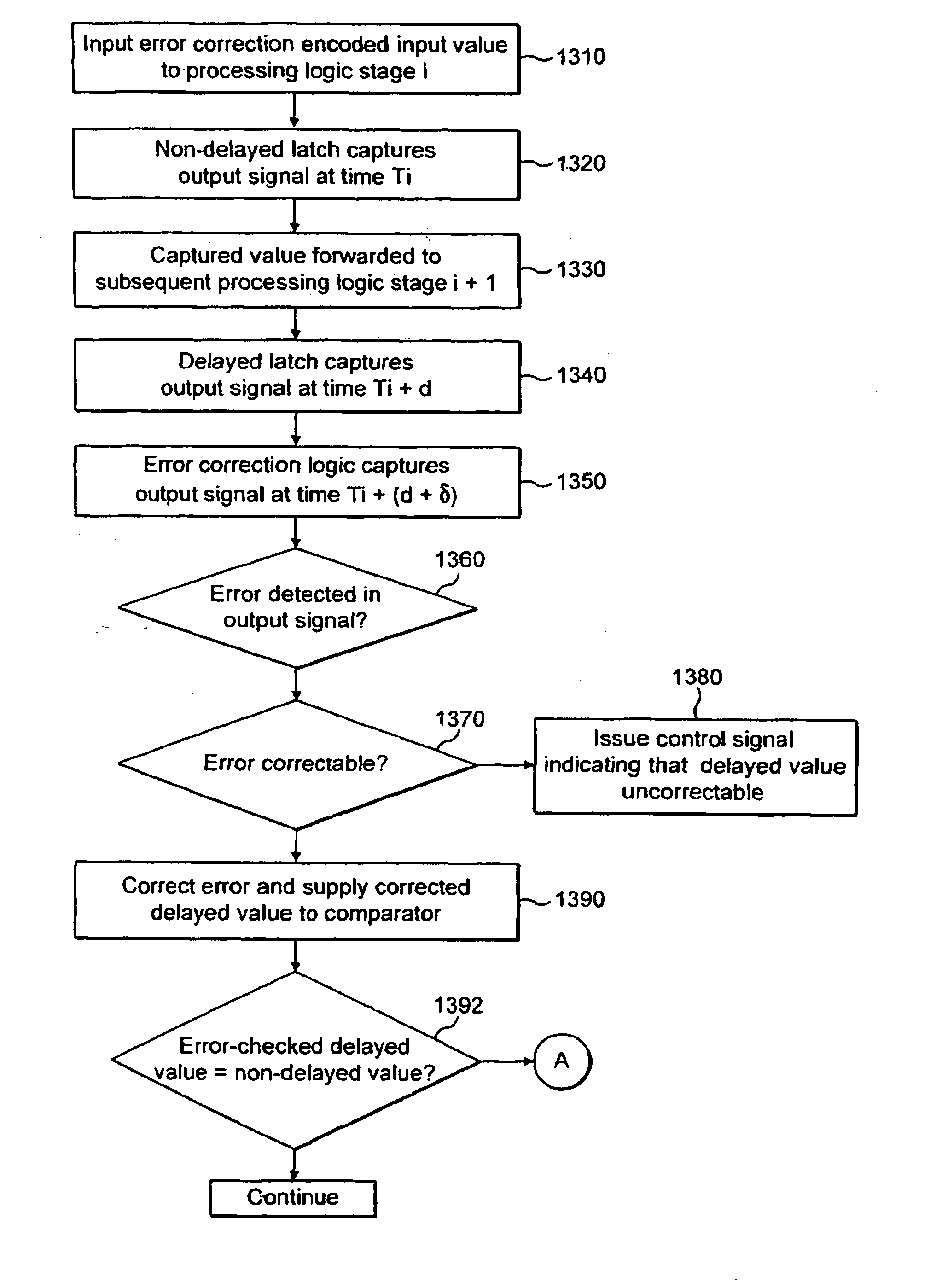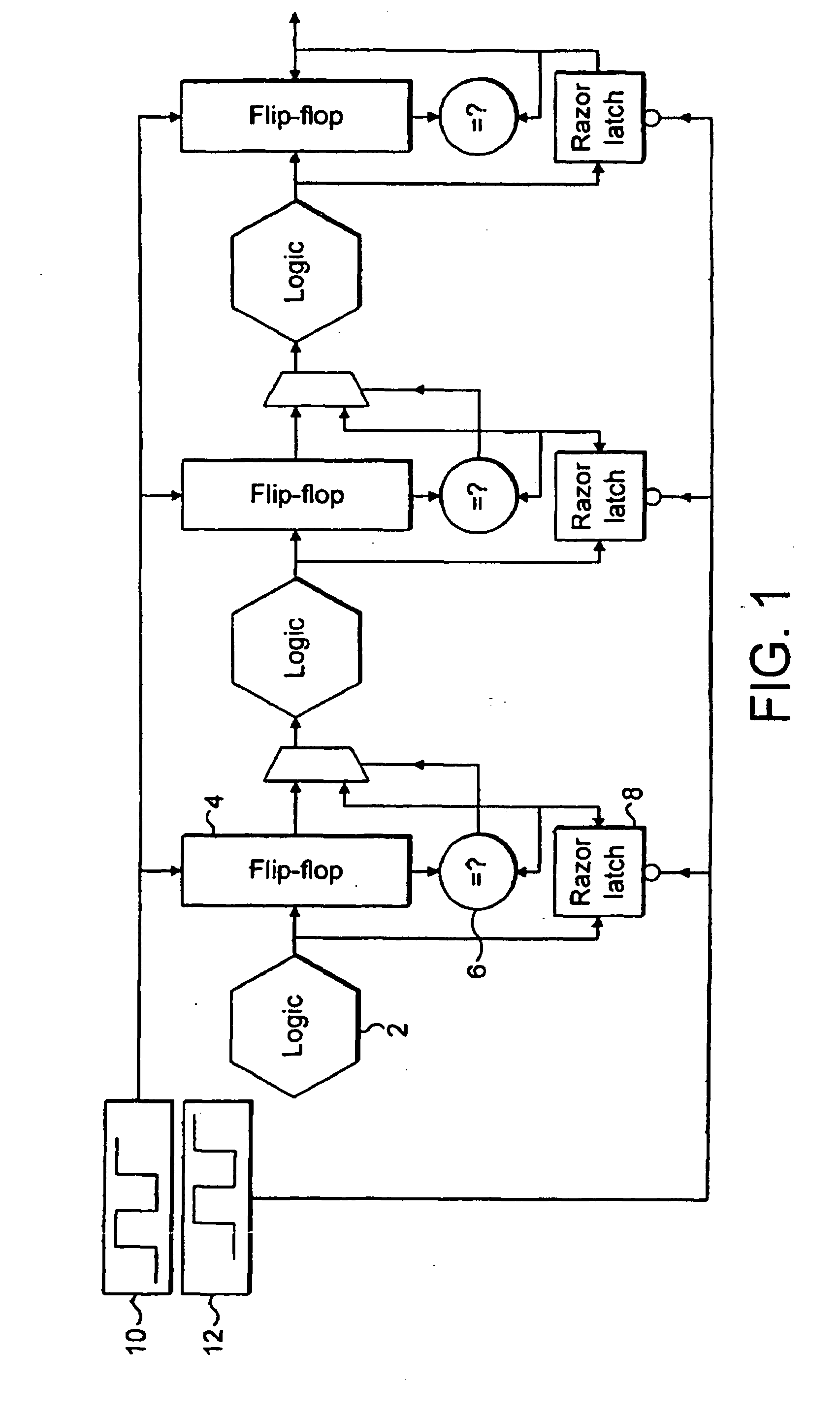Error recovery within processing stages of an integrated circuit
a technology of error recovery and integrated circuit, which is applied in the field of integrated circuits, can solve the problems affecting the forward-progress of computation, and requiring a large number of delay latches to be added to the integrated circuit to implement error detection and recovery, etc., and achieves the effect of reducing the likelihood of errors in operation
- Summary
- Abstract
- Description
- Claims
- Application Information
AI Technical Summary
Benefits of technology
Problems solved by technology
Method used
Image
Examples
Embodiment Construction
[0067]FIG. 1 illustrates a part of an integrated circuit, which may be a part of a synchronous pipeline within a processor core, such as an ARM processor core produced by ARM limited of Cambridge, England. The synchronous pipeline is formed of a plurality of like processing stages. The first stage comprises processing logic 2 followed by a non-delayed latch 4 in the form of a flip-flop together with a comparator 6 and a delayed latch 8. The term latch used herein encompasses any circuit element operable to store a signal value irrespective of triggering, clock and other requirements. Subsequent processing stages are similarly formed. A non-delayed clock signal 10 drives the processing logic and non-delayed latches 4 within all of the processing stages to operate synchronously as part of a synchronous pipeline. A delayed clock signal 12 is supplied to the delayed latches 8 of the respective processing stages. The delayed clock signal 12 is a phase shifted version of the non-delayed c...
PUM
 Login to View More
Login to View More Abstract
Description
Claims
Application Information
 Login to View More
Login to View More - R&D
- Intellectual Property
- Life Sciences
- Materials
- Tech Scout
- Unparalleled Data Quality
- Higher Quality Content
- 60% Fewer Hallucinations
Browse by: Latest US Patents, China's latest patents, Technical Efficacy Thesaurus, Application Domain, Technology Topic, Popular Technical Reports.
© 2025 PatSnap. All rights reserved.Legal|Privacy policy|Modern Slavery Act Transparency Statement|Sitemap|About US| Contact US: help@patsnap.com



